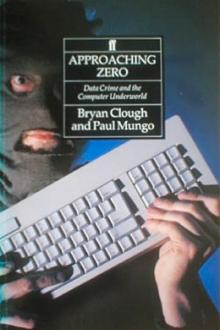The Kidnap Years: David Stout (best inspirational books TXT) 📖

- Author: David Stout
Book online «The Kidnap Years: David Stout (best inspirational books TXT) 📖». Author David Stout
After holding back the mob with tear gas and bayonets, the guardsmen took the suspects to Baltimore to be jailed. But on November 29, just a day after the confrontation in Salisbury, a state judge in Princess Anne ordered the four suspects released, finding that the arrests had been improper. Outside the courthouse, a raucous celebration was punctuated by blaring car horns.
On the same day, Governor Rolph of California made it clear that he had not softened his vigilante attitude toward lynching. “No price is too high to pay if we can drive these fiendish kidnappers out of our state and nation,” he declared. “When we consider the agony to which Brooke Hart, a fine sample of American manhood, was subjected, and when we think of the innocent Lindbergh baby wrested from the security of his very bed and murdered, can we blame the people for becoming aroused?”117
The violent events in late November 1933 and the extraordinary spectacle of a California governor applauding vigilante justice were treated by print reporters like the big stories they were. Had television and the Internet existed back then, there might have been serious debate on whether the country was changing in fundamental and deeply frightening ways.
Verne Miller, who had found his duties as a South Dakota sheriff too confining and so had turned to crime, was found dead in a ditch outside Detroit on November 29, 1933. He had been beaten and strangled. The FBI said it had information that he was killed in retaliation for shooting a mobster from Newark, New Jersey.
It seemed that the sunny prediction of former New York governor Alfred E. Smith that Adolf Hitler and his crew were too stupid to remain in power had been mistaken. On the contrary, Hitler now seemed firmly in control of Germany. It seemed that the very foundations of German society were crumbling. For one thing, a movement was underway to unite all Christians, Catholic and Protestant, under a new religion. “Together with Chancellor Hitler, we will build a new German church,” Protestant bishop Ludwig Müller of Königsberg proclaimed in late November.118
Several other Protestant leaders, uneasy over Müller’s ties to the Nazi regime, declared that they would have nothing to do with the movement, which embraced anti-Semitism. Nevertheless, Müller’s statement illustrated how Nazism was affecting every aspect of German life.**
And while Americans shuddered at the thought of another war, there was a warning that, if one came, the U.S. Army would be ill prepared—unless drastic improvements were made. For the moment, the army was woefully below strength in numbers and equipment given “the obvious state of unrest now prevailing throughout the world,” warned General Douglas MacArthur, the army’s chief of staff.
But if Europe was in turmoil, there was at least some heartening news from the other side of the world. In a statement coinciding with the eve of Thanksgiving in America, the foreign ministry of Japan said it was hopeful that talks with the United States could head off any naval competition between the countries and thus preserve peace in the Pacific.
*It is not clear from news accounts at the time if investigators were misleading the kidnappers when they announced on November 13 that they would no longer intercept calls to the Hart home or if they knew from earlier intercepts that the latest call must be coming from the garage.
**The politically naïve Müller had been an obscure clergyman until his fervent Nazi beliefs caught the eye of Hitler, who had him installed as a bishop. Müller’s movement never succeeded, and he committed suicide in 1945 in despair over Germany’s defeat.
CHAPTER THIRTY-TWO
TOUHY’S TORMENT CONTINUES
Chicago
Monday, December 4, 1933
“With repeal less than 48 hours away, federal officials worked throughout today to put in running order the government’s machinery for controlling the flow of legal liquor in wet states and protecting the dry.”119 So began a front page article in the Chicago Tribune trumpeting the end of the noble experiment, effective the next day, Tuesday, December 5. Utah had just become the necessary thirty-sixth state to ratify the Twenty-First Amendment, thus repealing the Eighteenth Amendment, which had established Prohibition. All across the country, people who liked an adult beverage or two (or four or five) now and then prepared to celebrate.
But it was a gloomy time for Roger Touhy, who had prospered by running illegal alcohol during Prohibition. Then there was Dan “Tubbo” Gilbert, the Cook County prosecutor, who was nothing if not persistent. With the acquittal of Touhy and his associates (“Touhyites,” the Chicago papers called them) in the kidnapping of William Hamm, Gilbert was determined not to let Touhy escape his clutches. This time, he would try to get them for the kidnapping of “Jake the Barber” Factor (if indeed Factor had really been kidnapped).
On December 4, 1933, at Gilbert’s request, Governor Henry Horner of Illinois signed warrants for the extradition from Minnesota to Chicago of Touhy and his associates Edward McFadden and Gus Schaefer. They had remained in jail in St. Paul on the authorities’ assumption that Gilbert would want them sent to Chicago.
Another “Touhyite,” Albert Kator, who had not been accused in the Hamm kidnapping, was also named a suspect in the Factor case. Yet another Touhy ally, Willie Sharkey, who had been a defendant in the Hamm case, had found the ordeal too much to bear. Emotionally undone despite being acquitted, he hanged himself in his jail cell in St. Paul.
In a coincidence that seemed remarkable but that Chicago journalists seemed not to have underlined, on the very day that Governor Horner signed the extradition order, the U.S. Supreme Court ruled that Factor should be extradited to Britain to stand trial in a stock-swindling scheme he had been





Comments (0)